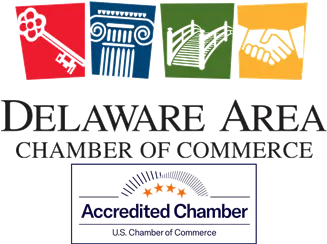%201%20(1).webp)
%201%20(1).webp)

The Importance of Quality Pavement Maintenance


Solving Uneven Concrete Settlement Problems in Columbus Properties
Uneven concrete is more than just an eyesore. It causes frustration every time someone trips or pulls into a driveway off-balance. Homeowners across Columbus notice these changes when sidewalks tilt, steps shift, or patio slabs sink lower than the rest. The problem usually develops slowly. At first, it might seem like a small dip or raised corner, but over time it becomes a trip hazard, drainage issue, or a full replacement concern.
Some of these problems show up in newer homes too, not just older structures. It is not always a sign of age. The land underneath a concrete slab has more to do with how long the surface stays even than the slab itself. When that base shifts, drops, or washes away, the concrete on top follows. The good news is that there are professional solutions that correct it without having to tear up the entire area every time. But before repairs begin, it helps to understand what is causing the issue in the first place.
Causes of Uneven Concrete Settlement in Columbus Properties
The soil under concrete is the foundation that supports everything on the surface. When something goes wrong with that soil, whether it moves, compresses, or gets washed out, the concrete starts to lose support. Then it either cracks, sinks, or in some cases, starts raising unevenly. In Columbus, where weather, tree lines, and infrastructure vary from one neighborhood to the next, multiple issues could lead to this kind of movement. Below are some of the most common causes.
1. Soil erosion and compaction
Heavy rainfall, drainage from gutters, or poor site grading can cause the soil under slabs to wash out. When water carries soil away, concrete above may slump or drop as the air pocket grows beneath it. Compaction from heavy traffic can also compress weaker fill soil that is no longer able to support the slab.
2. Poor construction practices
When the original concrete was poured, the base underneath may not have been compacted correctly or needed reinforcement that was never added. Thin slabs, substandard fill, or skipping gravel layers during prep work are common causes of future settlement. Over time, small mistakes during installation lead to expensive repairs.
3. Water damage and drainage issues
Water is one of the biggest threats to a stable slab. Poor drainage allows runoff from nearby buildings or driveways to move toward the concrete instead of away from it. Once the water gets under the slab, it loosens up the support layers and weakens the sections below. In warmer months, this is even more likely as rain events become more frequent.
4. Tree roots and vegetation
Tree roots grow under driveways and patios searching for moisture. As they get larger, they can push against concrete, lifting one edge and leaving another unsupported. On the flip side, if mature trees are removed, the root systems decompose, leaving behind soil voids that settle unevenly. Both scenarios leave the slab at risk of damage.
One homeowner in the northern part of Columbus had a patio slab that sank near the house within just a few years of installation. After inspection, it turned out that the downspout emptied right alongside the slab during every storm. That steady flow of water had slowly washed out the gravel base despite the concrete looking stable at first.
Understanding what is under the surface is key. Without correcting the root cause, even the best repairs will not last long. Rushed fixes that do not handle the underlying soil issues may look nice for a few months, but eventually, they will crack, separate, or settle again.
Problems Caused by Uneven Concrete Surfaces
Homeowners might think a small tilt or dip is not a big deal, but uneven concrete surfaces create a range of issues that affect both safety and property value. Fixing them earlier rather than later often saves bigger repairs over time. The practical concerns extend far beyond appearances.
Here are some of the problems that can develop:
- Trip hazards and safety concerns: Raised edges or sunken areas in a walkway or driveway create tripping risks, especially for children, older adults, or guests unfamiliar with the space. Even a difference of half an inch can create a hazard.
- Structural wear and tear: Concrete settled near entryways or garages can pull away from the structure, allowing water and debris to enter gaps. This can lead to bigger repair issues like foundation damage, moisture intrusion, or cold air leaks.
- Standing water and drainage problems: When concrete loses its level grade, it no longer drains water away as intended. This can lead to puddles on a patio or runoff toward basements and crawl spaces. Moisture build-up increases the chance of mold, erosion, and pest problems.
- Reduced curb appeal: While curb appeal is not always a priority, cracked or sloped sidewalks and driveways negatively affect how the property looks. That often reflects poorly on the entire home and might become noticeable to potential buyers or appraisal reports.
What makes concrete settlement so irritating is that it rarely happens all at once. One year it is a slight crack, the next year it is a slope where snow melts into the wrong area, and by the third year, it has become too obvious to ignore. That slow change means many homeowners delay repairs or ignore early signs, which only leads to higher costs later. If there is already movement or cracking, it is not likely to stop on its own. The damage gets worse the longer it is left untreated.
Solutions for Fixing Uneven Concrete Settlement
Addressing uneven concrete is not about covering it up or smoothing out visible damage. It is about restoring the surface from the ground up. Any long-term fix first needs to stabilize the soil underneath. In Columbus, where shifting weather, heavy spring rains, and mature landscaping can all play a part, choosing the right method is key to making sure the repair lasts.
Here are some of the most effective repair strategies:
- Concrete replacement and resurfacing
In cases where the concrete is cracked beyond repair or the slab has deteriorated too much, replacement might be the best route. Removing the damaged slab and pouring new concrete on a properly prepared base ensures the issue will not return. Resurfacing is sometimes an option when cracks are shallow but widespread.
- Professional assessment and repair planning
Uneven concrete can come from multiple sources, so it is important to carefully evaluate before choosing a fix. Our professionals start with a thorough inspection, checking for soil involvement, water patterns, and structural movement to choose the right method. Thinking long-term often saves money and prevents the same issue from resurfacing.
For example, a Columbus homeowner noticed their garage apron began cracking and pulling away from the driveway. They had repaired the surface a few years earlier using patchwork, but the problem returned. After an inspection, the issue turned out to be poor grading, which sent rainwater flowing underneath the slab. This time, the area was lifted with polyurethane foam and re-graded to redirect runoff properly.
Choosing the correct fix depends on the slab condition, soil condition, and drainage layout. Injecting foam into a poor drainage setup will only mask the issue for a short time. That is why surface-level patch jobs often disappoint. A full repair approach includes addressing why the slab moved in the first place, then fixing it from the bottom up.
Benefits of Hiring Our Concrete Contractors in Columbus
When it comes to correcting uneven slabs, tools and materials make a big difference, but so does the crew behind them. Our team of concrete contractors in Columbus combines field-tested repair techniques with real-time site evaluations. That means better repairs the first time without shortcuts that lead to future problems.
Here is what homeowners in Columbus can expect when working with our team:
- Skilled craftsmanship built on experience
Our professionals do not guess. They assess the terrain, check for moisture issues, and verify which approach fits best before starting work.
- The right tools for the job
From precision drilling equipment to advanced injection systems, our technicians use industry-standard tools designed to support stable lifts and fill voids fully.
- Repair outcomes that hold up
A fix is not helpful if it breaks down in a few months. That is why our approach focuses on lifting and stabilizing slabs with detailed care, giving homeowners long-lasting surfaces they can rely on.
- Clear communication and planning
From the moment a project starts, our team outlines what needs to be done, why it matters, and how long it will take. That reduces guesswork for homeowners and leads to cleaner, safer work zones.
Having people on-site who understand the unique soil and moisture conditions across Columbus neighborhoods helps avoid one-size-fits-all repairs. Whether a slab shows three inches of settlement or has shifted gradually year after year, our crew evaluates the full picture.
Maintaining Safe and Attractive Concrete Surfaces in Columbus Properties
Uneven concrete is never just a surface issue. It means something deeper is shifting or collapsing, something worth inspecting before a small slope becomes a full hazard. In Columbus, it is smart to monitor not just where water is going, but how traffic, soil, and even seasonal temperatures may be changing the condition of your walkways and driveways.
Staying ahead of these changes does not need to be complicated. Once caught early, many uneven areas can be fixed without full replacements, which saves both time and disruption. But if left unchecked, sinking slabs can create larger structural problems or safety concerns. Whether it is a front walkway pulling away from a porch step or a backyard patio creating drainage issues, addressing it early is the best move.
That is why homeowners across Columbus contact professionals when they notice signs like shifting edges, pooling water, or cracking that is more than just surface-deep. Bringing in experts who have seen these patterns before helps make sure the repair is done right and lasts.
Homeowners in Columbus understand that uneven concrete can lead to larger issues if not addressed early, and choosing a professional service can make all the difference. Working with a concrete contractor in Columbus ensures repairs are done thoroughly to prevent future risks while restoring the safety and appearance of your property. For a quick estimate or to book a service visit, please contact us today.
Recent Posts

Join Our Community of Readers
Stay updated with our latest insights and share your thoughts with us in the comments!


.svg)












.png)




